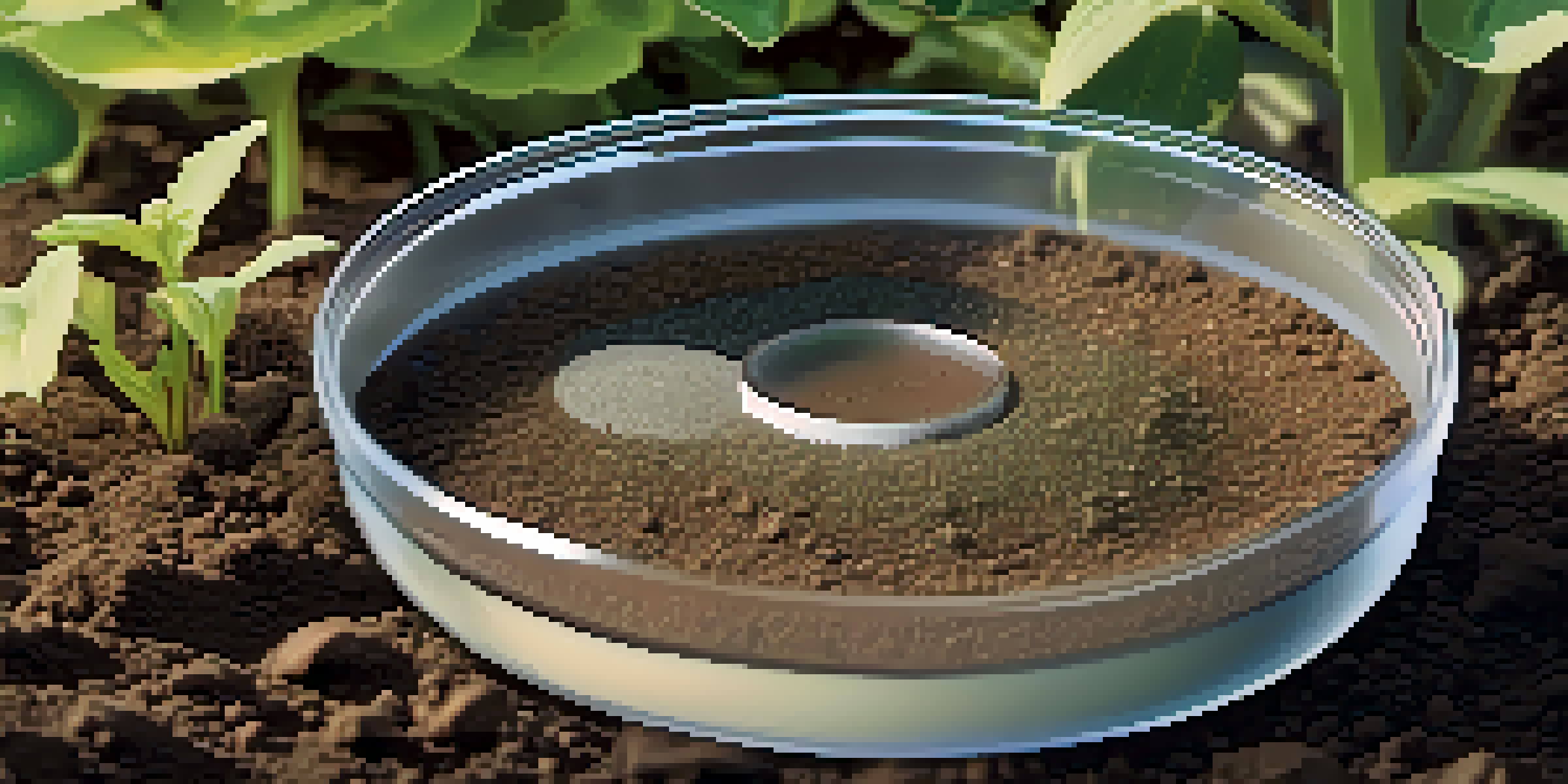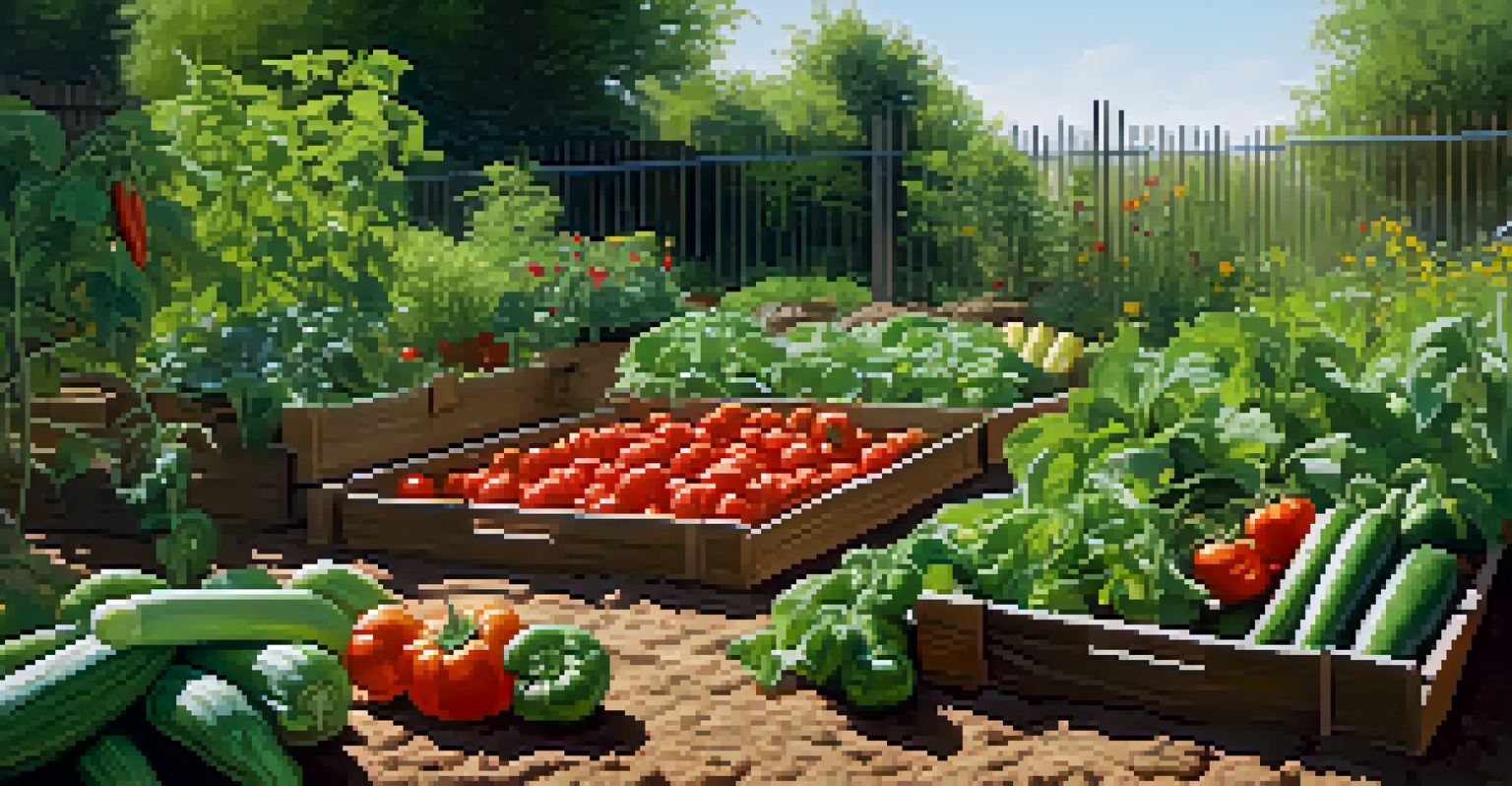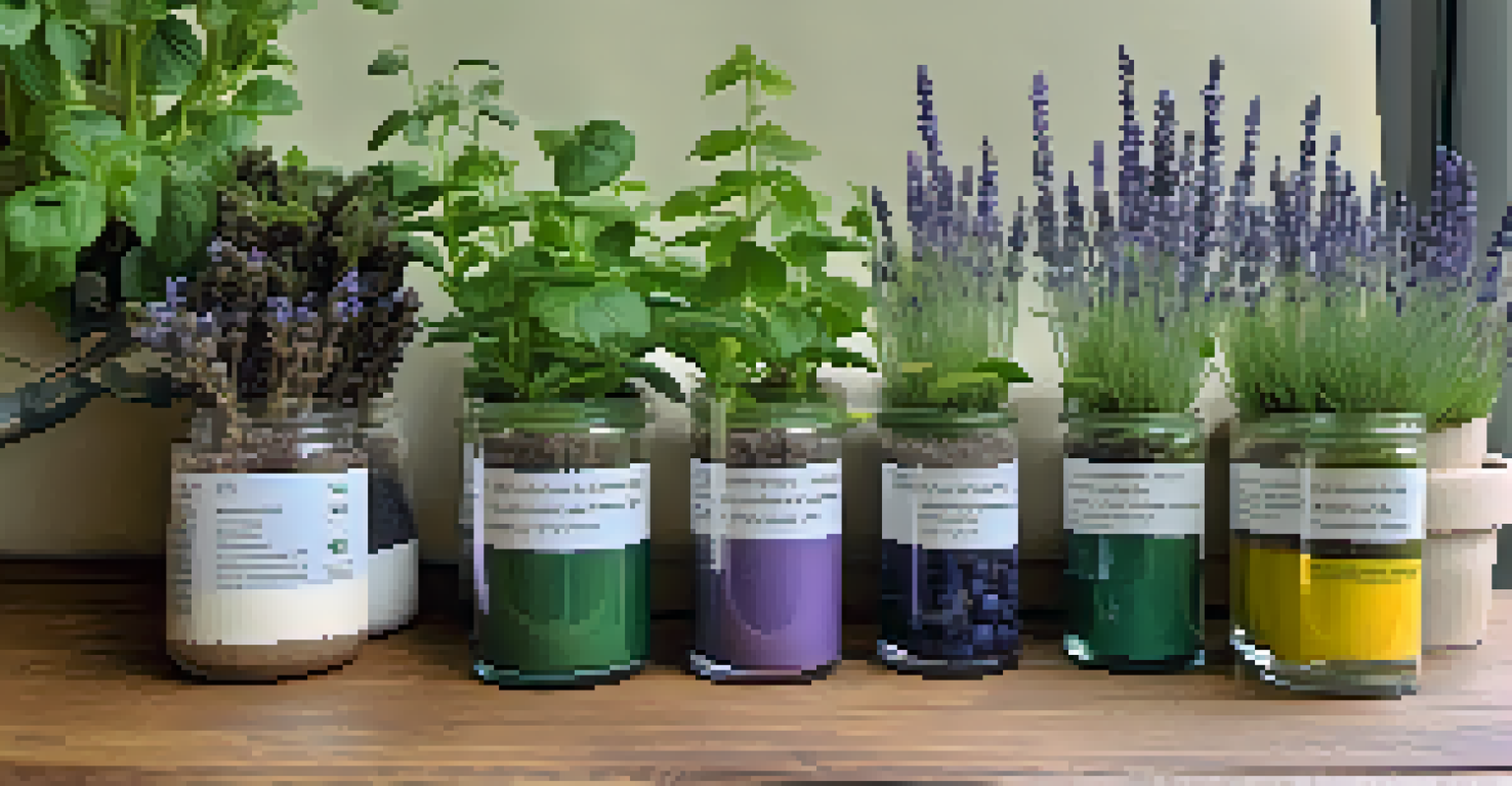The Influence of Soil pH on Plant Growth and Health

What is Soil pH and Why It Matters for Plants
Soil pH measures the acidity or alkalinity of the soil, ranging from 0 to 14. A pH of 7 is neutral, while values below 7 indicate acidity and above 7 signify alkalinity. Understanding soil pH is crucial for gardeners and farmers, as it directly affects nutrient availability to plants.
The health of soil is the foundation for the health of plants, and the health of plants is the foundation for the health of humans and the earth.
For example, most plants thrive in slightly acidic to neutral soil, typically between pH 6 and 7. If the soil is too acidic or too alkaline, plants may struggle to absorb essential nutrients, leading to poor growth and health. This makes monitoring and adjusting soil pH a vital practice for successful gardening.
In essence, soil pH acts like a gatekeeper, controlling which nutrients are accessible to plants. By maintaining an optimal pH level, you can ensure your plants have the best chance to flourish.
How Soil pH Affects Nutrient Availability
Soil pH plays a significant role in determining which nutrients are available for plant uptake. For instance, essential nutrients like nitrogen, phosphorus, and potassium become more available in a slightly acidic environment. Conversely, at very low or high pH levels, these nutrients can become locked away, causing deficiencies.

Take iron as an example; it is crucial for chlorophyll production in plants. At a pH above 7, iron becomes less available, potentially leading to yellowing leaves, a condition known as chlorosis. This illustrates how a slight shift in pH can dramatically impact plant health.
Understanding Soil pH is Crucial
Soil pH affects nutrient availability, making it vital for gardeners to monitor and adjust pH levels for plant health.
Understanding the relationship between soil pH and nutrient availability can empower gardeners to amend their soil accordingly. By testing and adjusting pH, they can create a thriving environment for their plants.
The Ideal pH Range for Different Plant Types
Different plants have varying pH preferences, making it essential to know what you’re growing. For example, most vegetable crops prefer a pH range of 6 to 7, while blueberries thrive in more acidic soils with a pH of 4.5 to 5.5. This diversity highlights the importance of tailoring soil conditions to specific plants.
Healthy soil is the basis for healthy plants. It all starts with the soil.
In ornamental gardening, certain flowers, like azaleas and rhododendrons, also favor acidic soils, whereas others, like lavender, prefer more alkaline conditions. Knowing these preferences can influence plant selection and placement in your garden.
By understanding the ideal pH range for your plants, you can make informed decisions about soil amendments, ensuring that each plant species gets the environment it needs to thrive.
How to Test Soil pH Accurately
Testing soil pH is a straightforward process that can be done using various methods. Home testing kits are readily available at garden centers, providing a simple way to check your soil’s acidity. Alternatively, you can send a soil sample to a local agricultural extension office for a more precise analysis.
When testing, it's important to take samples from different areas of your garden to get an accurate representation of overall soil pH. This can help identify any variations and allow for targeted amendments.
Different Plants Need Different pH
Each plant species has its own ideal pH range, emphasizing the importance of tailoring soil conditions to specific plants.
Once you have your pH results, you can decide on the necessary adjustments, whether that means adding lime to raise pH or sulfur to lower it, ensuring optimal conditions for your plants.
Amending Soil pH: Tips and Techniques
Amending soil pH is an essential step in creating a healthy planting environment. To raise soil acidity, organic materials like pine needles or peat moss can be incorporated into the soil. For those looking to lower pH, adding ground lime is a common practice.
It’s important to make these amendments gradually, as sudden changes can shock plants. Regular testing after amendments can help you track progress and ensure that the soil pH reaches the desired level.
Additionally, mulching and composting can naturally help maintain soil pH over time, creating a balanced ecosystem that supports plant health.
The Impact of Soil pH on Soil Microorganisms
Soil pH doesn't just affect plants; it also plays a crucial role in the health of soil microorganisms. These tiny organisms, including bacteria and fungi, are vital for nutrient cycling and organic matter decomposition. They thrive within specific pH ranges, so an imbalance can disrupt their populations.
For example, beneficial bacteria that help with nitrogen fixation prefer a slightly acidic to neutral pH. If the soil becomes too acidic or alkaline, these microorganisms may struggle to survive, impacting overall soil health.
Testing and Amending Soil pH
Regular soil pH testing and gradual amendments are essential practices to create optimal growing conditions for plants.
Maintaining an optimal pH not only benefits plants but also supports a thriving community of microorganisms, leading to healthier, more productive soil.
Conclusion: The Importance of Soil pH for Healthy Plants
In conclusion, soil pH is a vital factor influencing plant growth and health. By understanding its role in nutrient availability, plant preferences, and soil biology, gardeners can create optimal conditions for their plants. Regular testing and amendments can ensure that your soil remains within the ideal pH range.
As you cultivate your garden, remember that a little knowledge about soil pH can go a long way. By prioritizing soil health, you’re not just supporting your plants but also the entire ecosystem.

Ultimately, a well-balanced soil pH leads to flourishing plants and a bountiful garden, making it an essential consideration for any gardener.